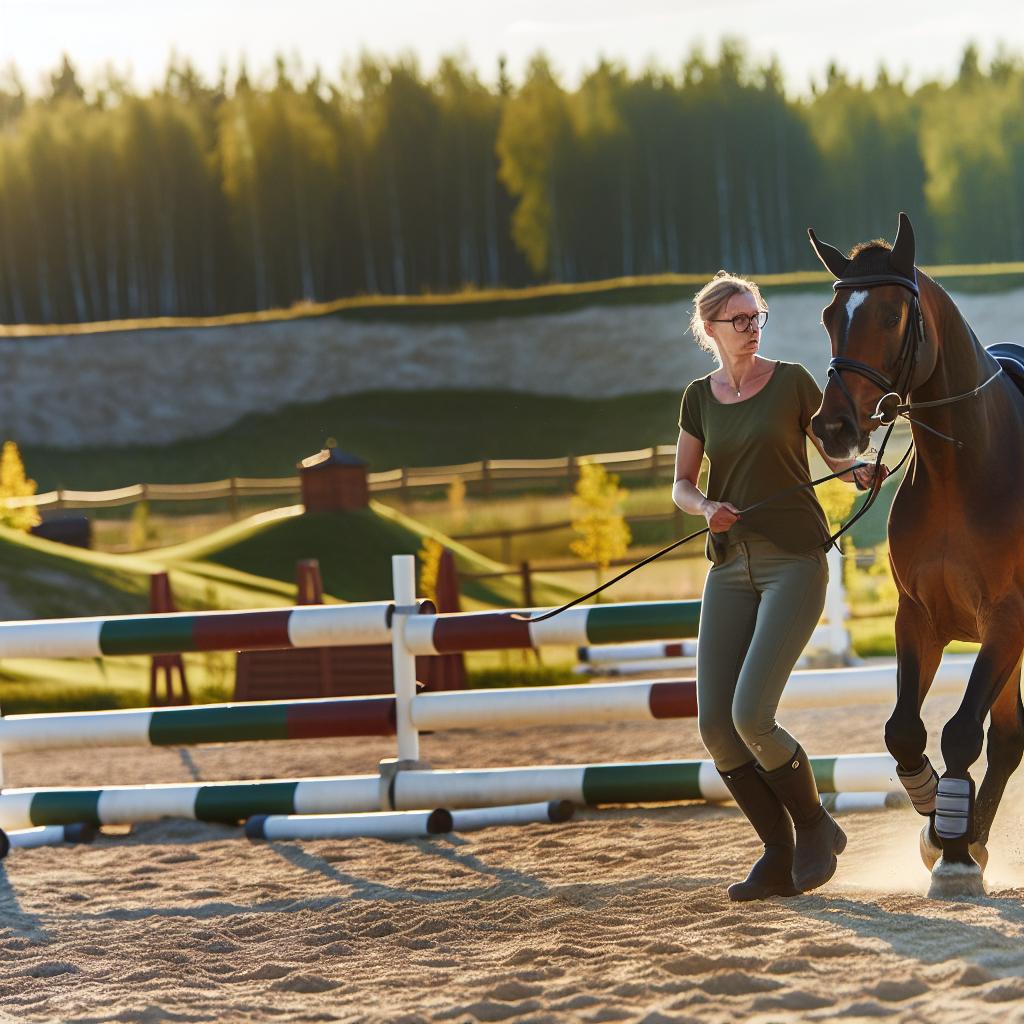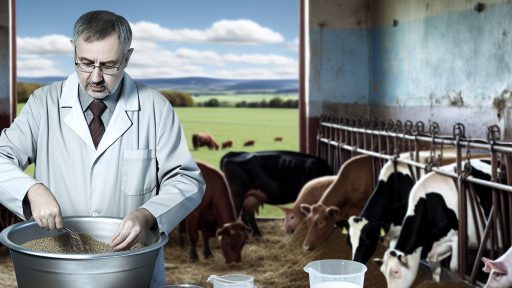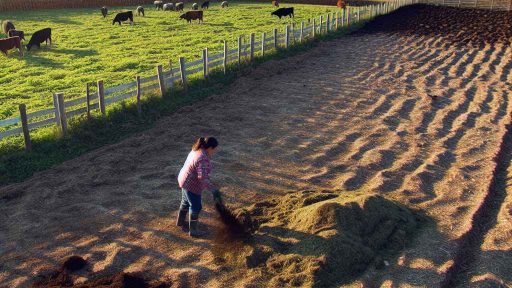Introduction to Equine Exercise
Equine exercise plays a crucial role in a horse’s overall health.
It enhances physical performance and increases endurance.
Moreover, regular exercise helps maintain a horse’s mental well-being.
There are various benefits to incorporating exercise into a horse’s routine.
Improving Physical Fitness
Exercise significantly improves a horse’s cardiovascular health.
It also helps in building muscle strength and flexibility.
Regular workouts promote balanced body development in horses.
Enhancing Performance
Proper exercise routines improve a horse’s performance in competitions.
Training tailored to the horse’s needs can boost competitive spirit.
These routines also enhance coordination and agility.
Boosting Endurance
Endurance is vital for horses involved in long-distance events.
Consistent exercise increases stamina and lung capacity.
Furthermore, endurance training prepares horses for strenuous activities.
Mental Health Benefits
Physical activity alleviates stress and anxiety in horses.
An engaged horse exhibits improved behavior and focus.
Transform Your Agribusiness
Unlock your farm's potential with expert advice tailored to your needs. Get actionable steps that drive real results.
Get StartedAdditionally, exercise fosters a positive bond between horse and rider.
Importance of Regular Exercise
Equine exercise is essential for health and performance.
Integrating effective exercise routines enhances all aspects of a horse’s life.
Ultimately, the right exercise plan leads to a happier, healthier horse.
Understanding Equine Anatomy: Key Muscle Groups for Performance
Understanding equine anatomy enhances your ability to improve horse performance.
It allows trainers to design targeted exercise routines.
Additionally, anatomical knowledge aids in recognizing potential injuries.
Key Muscle Groups
There are several crucial muscle groups that contribute to a horse’s strength and endurance.
Each group plays a vital role in overall performance.
Forelimb Muscles
The forelimb muscles include the biceps brachii and the triceps brachii.
These muscles are essential for lifting and propelling the front end during movement.
Hindlimb Muscles
The gluteal muscles and quadriceps are significant for hind limb propulsion.
Strong hindlimb muscles provide power for galloping and jumping.
Core Muscles
The core muscles stabilize the horse’s body during movement.
These muscles include the abdominal and oblique muscles.
A strong core supports agility and balance.
Impact of Muscle Development on Performance
Developing these muscle groups leads to enhanced overall horse performance.
Stronger muscles improve speed and endurance during competitions.
Furthermore, well-developed muscles reduce the risk of injury.
Incorporating Exercises
To strengthen these muscle groups, specific exercises are necessary.
Ground work, hill work, and targeted strength training can be beneficial.
In a well-rounded program, variety keeps the equine athlete engaged.
Types of Equine Exercise Routines: Strengthening vs. Endurance
Strengthening Exercises
Strengthening exercises develop a horse’s muscle power and stability.
These routines enhance overall performance and prevent injury.
Showcase Your Farming Business
Publish your professional farming services profile on our blog for a one-time fee of $200 and reach a dedicated audience of farmers and agribusiness owners.
Publish Your ProfileKey strengthening activities include lunges and hill work.
Incorporating resistance training increases muscle engagement significantly.
Short bursts of high-intensity work target specific muscle groups effectively.
Endurance Exercises
Endurance exercises build a horse’s stamina and cardiovascular fitness.
Long-distance riding and trotting contribute to improved endurance.
Regularly incorporating interval training helps condition the horse’s body.
Gradual increases in distance and pace enhance overall stamina.
This training fosters better performance in competitive settings.
Balancing Strength and Endurance
A balanced routine includes both strength and endurance exercises.
Such a combination leads to a well-rounded athletic horse.
Transitioning between these exercise types prevents burnout and injury.
Consider the horse’s age and fitness level when designing routines.
Additionally, keep in mind the specific demands of the horse’s discipline.
Monitoring Progress
Regular assessments provide insight into the horse’s development.
Tracking improvements in strength and stamina is essential.
Use fitness metrics such as heart rate and recovery time for evaluations.
Adjust the training program based on the horse’s progress.
Always prioritize the horse’s well-being in all exercises.
Find Out More: Organic Livestock Farming for Grazing Management
Designing an Effective Strength Training Program for Horses
Establishing Clear Goals
Begin by defining specific goals for your horse’s training.
Consider factors such as age, breed, and current fitness level.
Additionally, think about the desired performance outcomes.
For instance, do you aim to improve speed or enhance endurance?
Identifying your objectives helps tailor the training program effectively.
Evaluating Current Fitness Levels
Assess your horse’s current fitness and health status.
Conduct regular evaluations through various exercises and gallops.
Take note of your horse’s strengths and weaknesses.
Monitoring these factors aids in creating a balanced routine.
Incorporating Different Exercise Types
Include a variety of exercises to engage different muscle groups.
For instance, lunging helps improve balance and coordination.
Hill work enhances cardiovascular fitness and strength.
Cross-training with jumping can increase flexibility and muscle tone.
These diverse activities keep the training routine interesting.
Prioritizing Recovery and Nutrition
Recovery is as crucial as the workouts themselves.
Ensure your horse has adequate rest days in the training schedule.
Provide a balanced diet to support their exercise routine.
Include high-quality hay and grains along with supplements if necessary.
Hydration also plays an important role in recovery.
Monitoring Progress and Adjustments
Regularly track your horse’s progress throughout the program.
Use a journal to record improvements and any challenges faced.
Showcase Your Farming Business
Publish your professional farming services profile on our blog for a one-time fee of $200 and reach a dedicated audience of farmers and agribusiness owners.
Publish Your ProfileBe prepared to adjust the training plan based on these observations.
Flexibility in your approach will lead to better results over time.
Consulting with Professionals
Consider working with equine trainers or veterinarians.
Their expertise can guide you in creating an effective program.
Regular check-ups ensure that your horse remains healthy.
Additionally, trainers can introduce specialized exercises if needed.
Professional guidance can enhance your horse’s training experience.
Learn More: Equine Parasite Control Strategies for Maintaining Horse Health
Endurance Training Techniques: Building Stamina Over Time
Establishing a Foundation
Building a solid foundation is crucial for endurance training.
Start with a consistent workout schedule.
This schedule allows for gradual muscle adaptation.
Incorporate basic exercises like walking and trotting.
Ensure you track your horse’s progress over time.
Interval Training for Improved Performance
Interval training enhances both strength and stamina.
Alternate between high-intensity bursts and low-intensity recovery periods.
For example, gallop for two minutes, then walk for one minute.
Repeat this cycle several times during a session.
This method allows your horse to build endurance efficiently.
Long Distance Rides
Long distance rides are essential for cardiovascular endurance.
Gradually increase the distance of training rides each week.
Aim for varying terrains to challenge your horse.
These rides improve muscle stamina and mental resilience.
Always monitor your horse for signs of fatigue.
Cross-Training Activities
Cross-training provides a balanced approach to endurance building.
Introduce activities such as swimming or lunging.
These activities enhance overall fitness and reduce injury risk.
Varying workouts keeps your horse mentally engaged.
Furthermore, it allows for recovery while still training.
Consistent Nutrition and Hydration
Nutrition plays a vital role in endurance training.
Ensure your horse has access to high-quality hay and grain.
Supplements may also be necessary for optimal performance.
Hydration is crucial, especially during long rides.
Provide water every hour during training sessions.
Regular Assessments and Adjustments
Assessing progress allows for necessary adjustments in training.
Keep detailed records of workouts, distances, and times.
Adjust routines based on your horse’s performance and recovery.
Regular veterinary check-ups can help identify any issues.
Listen to your horse and respond to its needs over time.
You Might Also Like: Ethical and Humane Handling Practices in Pig Farming
Incorporating Flexibility and Stretching into Routines
The Importance of Flexibility
Flexibility enhances a horse’s overall performance.
Showcase Your Farming Business
Publish your professional farming services profile on our blog for a one-time fee of $200 and reach a dedicated audience of farmers and agribusiness owners.
Publish Your ProfileIt reduces the risk of injuries during exercise.
When horses are flexible, they can achieve greater range of motion.
This improved mobility contributes to better endurance.
Key Stretching Techniques
Dynamic stretches are ideal for warming up.
Incorporate slow leg lifts to stretch the hamstrings.
Allow the horse to extend its neck to stretch the back.
Static Stretching for Recovery
Static stretching is effective after workouts.
Hold stretches for 15 to 30 seconds to benefit muscle recovery.
Use gentle pressure to avoid discomfort or injury.
Creating a Stretching Routine
Start by assessing the horse’s current flexibility level.
Include a mix of dynamic and static stretches in your routine.
Schedule stretching sessions at least three times a week.
Monitoring Progress
Track improvements in flexibility over time.
Look for changes in range of motion and performance.
Adjust the routine as necessary to meet the horse’s needs.
Discover More: Beekeeping Insights for Improving Honeybee Health

Monitoring Horse Health: Signs of Fatigue and Overtraining
Understanding Fatigue
Fatigue occurs when a horse’s energy levels decline.
It can result from excessive exercise or inadequate recovery.
Pay close attention to changes in your horse’s behavior.
Signs include reluctance to move or decreased enthusiasm.
Physical Signs of Fatigue
Physical indicators can help identify fatigue in horses.
- A horse may exhibit heavy breathing during or after exercise.
- Look for excessive sweating beyond normal levels.
- Monitor for stiffness or lameness after riding or training.
Recognizing Overtraining
Overtraining occurs when a horse trains excessively without proper rest.
It can lead to diminished performance and health issues.
Identifying overtraining early is critical for recovery.
Signs of Overtraining
- Frequent mood changes can indicate stress and discomfort.
- Observe for loss of appetite or abnormal drinking habits.
- Watch for an increase in heart rate after light exercise.
Implementing Recovery Strategies
Proper recovery strategies can help prevent fatigue and overtraining.
Incorporate rest days into your horse’s exercise routine.
Hydration is essential, so ensure water is always available.
Consider nutritional supplements as part of their diet.
Regular Monitoring
Regular health checks keep your horse in top shape.
Schedule routine visits with a qualified veterinarian.
Daily observation can catch early signs of fatigue or overtraining.
Nutritional Considerations to Support Exercise Routines
Importance of Balanced Nutrition
A balanced diet significantly enhances equine performance.
It provides essential nutrients that support exercise demands.
Moreover, proper nutrition helps in recovery from strenuous activities.
Macronutrient Breakdown
Proteins are vital for muscle repair and growth.
Carbohydrates serve as the primary energy source during exercise.
Fats contribute to long-lasting energy for endurance activities.
Micronutrient Essentials
Vitamins and minerals play crucial roles in metabolic processes.
Calcium and phosphorus support bone health and muscle function.
Antioxidants minimize oxidative stress during intense training.
Showcase Your Farming Business
Publish your professional farming services profile on our blog for a one-time fee of $200 and reach a dedicated audience of farmers and agribusiness owners.
Publish Your ProfileHydration’s Role
Water is essential for maintaining optimal performance levels.
Dehydration can lead to serious health issues in horses.
Thus, ensure your horse has constant access to fresh water.
Feeding Strategies
Regular feeding schedules can optimize nutrient absorption.
Consider feeding smaller, more frequent meals.
Adjust the diet based on changing exercise routines and conditions.
Supplementation Considerations
Some horses may benefit from specific supplements.
Consult with a veterinarian before adding new supplements.
Popular options include joint support and energy boosters.
Monitoring Body Condition
Regularly assess your horse’s body condition score.
This monitoring helps make necessary dietary adjustments.
Ensure your horse maintains a healthy weight for optimal performance.
The Role of Forage
High-quality forage is foundational for horse nutrition.
It provides necessary fiber for digestive health.
Moreover, forages can supply natural vitamins and minerals.
Implications of Balanced Nutrition for Performance
By focusing on balanced nutrition, you can enhance equine performance.
This approach ensures your horse is fit for both strength and endurance.
Evaluating Performance: Metrics for Success in Equine Training
Understanding Key Performance Indicators
Key performance indicators (KPIs) help measure equine training success.
These metrics include speed, stamina, and agility among others.
Tracking these indicators enables trainers to assess progress effectively.
Measuring Speed
Speed is crucial in many equine sports and disciplines.
Trainers can measure speed using time trials on a track.
Comparing results over time shows improvements or areas for development.
Assessing Stamina
Stamina indicates how long a horse can perform at peak levels.
Longer endurance rides reveal a horse’s stamina capabilities.
Monitoring heart rate recovery rates provides insights into endurance.
Evaluating Agility
Agility reflects a horse’s ability to navigate obstacles quickly.
Obstacle courses test a horse’s responsiveness and flexibility.
Frequent evaluations help identify specific areas for agility improvement.
Utilizing Technology in Performance Metrics
Technology enhances how trainers gather performance data.
Wearable devices track vital signs and movement patterns.
Apps allow data analysis for better training decisions.
Benchmarking Against Standards
Setting performance benchmarks guides training progress.
These benchmarks can vary depending on the equine discipline.
Regularly reassessing these standards helps keep training focused.
Creating a Feedback Loop
Establishing a feedback loop is essential for performance enhancement.
Trainers should communicate regularly with riders about their observations.
Encouraging rider input fosters a collaborative training environment.
Adjusting Training Based on Metrics
Adjustments should be made as metrics indicate areas needing improvement.
Dynamic training programs respond to the horse’s changing performance levels.
Showcase Your Farming Business
Publish your professional farming services profile on our blog for a one-time fee of $200 and reach a dedicated audience of farmers and agribusiness owners.
Publish Your ProfileThis flexibility ensures continued growth and development in training.
Additional Resources
Performance Enhancing Hormone Doping in Sport – Endotext – NCBI …




